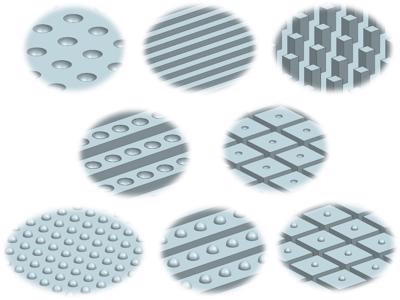This project acts as companion to the "Open-souce library of tissue engineering scaffolds" and has been also developed within INKplant EU project. The provided collection of microtextured geometries takes into account that the long-term success of most implantable devices, including tissue engineering scaffolds, relies not only on the actual biological, biochemical and biomechanical properties of the employed materials and designed geometries, but also on their surface topographies and related tribological performance. Systematically studying cell-material interactions is a challenging process, standardized to some extent in ISO 10993 that deals with the biocompatibility evaluation of medical devices, but still requiring innovative protocols capable of taking into account the effects of topography on cells. This project provides a comprehensive collection of microtextured geometries designed following biomimetic approaches and benefiting from systematic variations of design parameters, which is expected to provide researchers in tissue engineering, cell-material interactions and molecular biology, with a set of test probes for standardized and comparable in vitro studies. Test probes are designed for being microfabricated, employing both traditional approaches (substractive processes, chemical etching) and additive manufacturing technologies. Together with the library microtextured 2D or 2D 1/2 test probes, a subset of microtextured lattices, in fact complex-shaped tissue engineering scaffolds with design controlled surface topographies, is also provided. The aim of these textured scaffolds is to provide examples of microtextures mapped upon 3D porous lattices and networks, with which precision, resolution and repetability of ultra-high precission 3D printing technologies and related biomaterials can be evaluated. The eventual benefits of microtextured scaffolds can be also assessed with these geometries.

Medical tags
- Clinical need
- Replacement of human tissues or organs
- Area
- Molecular biology
- Technology
- In vitro diagnostic device
- Project keywords
- INKplant EU project, EC-INKplant, tissue engineering, cell culture, cell-material interactions, regenerative medicine, biofabrication, bioprinting, open-source medical devices.